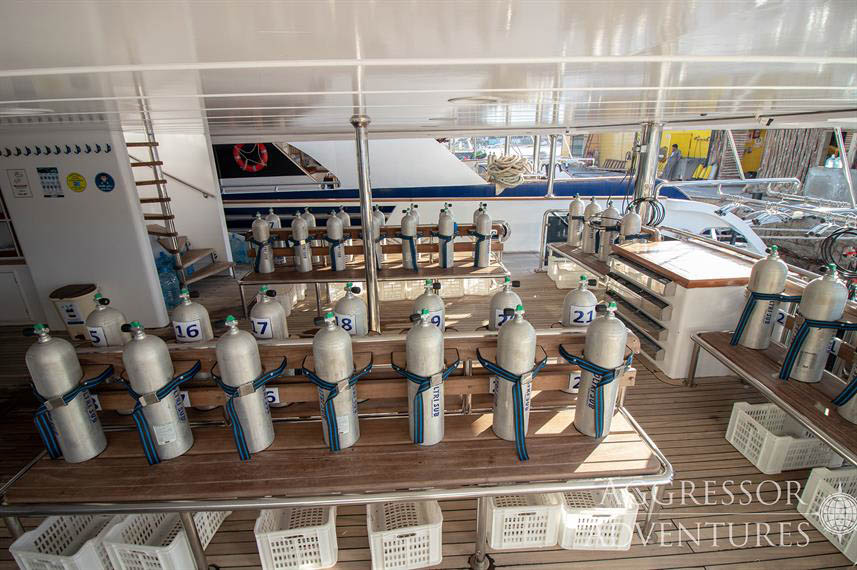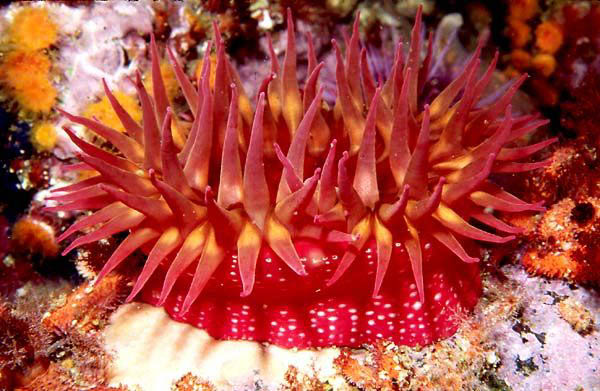For Greg Baldock and Dylan Smith, the attraction of scuba diving in the Pacific offshore from British Columbia’s Vancouver Island is twofold – water clarity and colour. The latter is a double bonus. While the Caribbean has colourful fish, the Pacific has that as well as invertebrates (sealife without a backbone) in a rainbow of colours. It was the sealife and spectacular colours that made Vancouver Island one of Jacques Cousteau’s favourite places to dive.
Off the coast of Steep Island, one of Greg’s favourite sites is an entire wall of tube worms that look like a pink and purple feather duster. From Greg’s base at Campbell River, where he manages the dive shop Beaver Aquatics, it takes about 10 minutes by boat to get there.
Not far from Steep Island there are huge boulders where everything from wolf eels, to giant Pacific octopuses and big lingcod can be found, among others. There are all kinds of different marine life, including rock fish and strawberry anemone that feed on plankton. The abundance of plankton sustains other marine life. Greg and Dylan also like to dive farther north at Port Hardy and Telegraph Cove that have even more light than Campbell River.
While the water is mainly clear, it is also cold. At the dive shop Greg manages, dive students are taught from open water and on up. The shop insists that divers take a dry suit course, as well, because the water temperature ranges from 45 to 50 degrees Fahrenheit. “It’s imperative to stay warm. There is lots of current. Tides are a factor where we are,” says Greg, adding that they can be up to 15 knots. “We are not usually diving when it is running that fast. The amount of light is stunning because of the current on the north coast.
Dylan is a commercial diver, as well as a recreational diving instructor. He says some of the jobs available to commercial divers include: working on fish farms; repairing boats underwater; boat inspections; power washing underwater; underwater construction and lifting boats from the bottom if they sank in shallow water (15 to 140 feet in depth). “There is work all over the place,” he says, especially in the northern islands.
Vancouver Island also has opportunities for those who like diving to shipwrecks. Greg and Dylan say two of them – the Columbia at Campbell River and the Saskatchewan at Nanaimo, were intentionally sunk for use as dive sites. There is lots of growth on them. The SS Capilano, which sank across from Powell River in 1915, lies about 140 feet below the surface. It is now a popular dive site for wreck divers. Discovered in 1975, the wreck has lots of colourful anemones. Hundreds of lingcod can be seen near this wreck. For technical divers there are sites with 140 to 200 feet of depth.
Greg says scuba diving was a lot bigger in the 1980s, but it has picked up now. “The technology has come so far that scuba is easier now. It is not as extreme. It is safer. It used to be thought of as dangerous but because of science and research it is very much safer and dry suits provide overall comfort.”
Divers from around the world are travelling to British Columbia in the summer to explore its coastal waters. Greg says they come from eastern and western Canada, the northern United States, Italy, the United Kingdom, Sweden and Norway. Says Greg: “People now realize what is here to see.”








